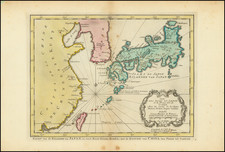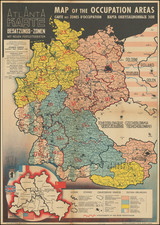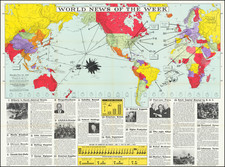Restricted U.S. Army Air Force Chart of the Type Used to Bomb Japan
During the closing stages of World War II, the U.S. Army Air Forces' Long Range Air Navigation Chart series, including the examples of the present chart, was used by the American aviators to navigate bombing runs on the Japanese home islands. The sheets covering the Caroline Islands (home to Tinian and Guam), Japan (the present chart), the Hawaiian Islands, and the Yellow Sea were critical for bombers and their navigators during 1944 and 1945.
While the first Doolittle Raid took place in April 1942, large-scale U.S. bombing of Japan did not commence until the latter part of 1944 and increased substantially in 1945 as the focus shifted away from Europe, and Curtis LeMay took over as the head of the 21st Bomber Command in the Pacific (January 1945), and the B-29 became available. The present example was printed in April 1944 ("W.P. 4/44" below the imprint line), and thus could have seen lengthy use by American bombers in this capacity. While there is no corroborating evidence on the chart itself, the mere fact of its existence and production date is strongly suggestive of this application.
Military infrastructure such as airfields, infantry bases, naval ports, and radio stations are noted on the map. The addition of strategically important cities also indicates this chart's use in strategic planning. Other key information for military activities is listed on the map and associated key.
A cautionary note at the bottom of the chart explicitly states its restricted status and use only for military purposes. To further highlight the sensitive nature of this document, the note continues to state that this map is not available for sale or distribution.
This chart is an intriguing look into U.S. military operations in the Pacific during the Second World War. This map accentuates the intelligence efforts of the United States during the war as well as the general military situation of mainland Japan towards the end of WWII.











![(Commodore Perry's Arrival in Edo Bay.) [Foreign Ship | Defence on Land and Sea] [lkokusen | Kairiku okatame]](https://storage.googleapis.com/raremaps/img/small/55558.jpg)

![(World War II - Iwo Jima) [Iwo Jima Aerial Reconnaissance Photograph 1-12-45]](https://storage.googleapis.com/raremaps/img/small/83775.jpg)


